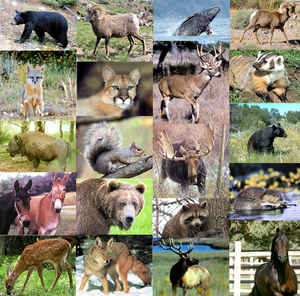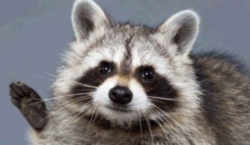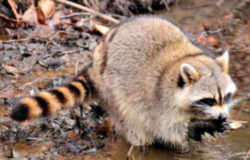What Is The State Wild Animal Of Tennessee?

State Animals

Tennessee Symbols

Tennessee Symbols
Agricultural Insect, Administrator of Letters, Amphibian, Creative person-in-Residence-2001, Aviation Hall of Fame, Drink, Bicentennial Poem, Bicentennial Rap Song, Bicentennial School Vocal, Bicentennial Tree, Bird, Butterfly, Commercial Fish, Cultivated Flower, Distinguished Service Medal, Evergreen Tree, Fine art, Flag, Flag of the Governor, Folk Trip the light fantastic toe, Fossil, Fruit, Game Bird, Gem, Historian (Durhamn), Historian (Dykeman), Horse, Insect (Firefly), Insect (Ladybug), Jamboree and Crafts Festival, Language, Mineral, Motto, Nicknames, Painting (Tn Treasures,) Painting (Tn Treasures Likewise,) Pets, Poem, Poet Laureate, Public School Vocal, Quarter, Railroad Museum (Tennessee Valley,) Reptile, Stone, Seal, Slogan, Song (My Homeland Tennessee,) Song (When It's Iris Time in Tennessee), Song ( Tennessee Flit), Song ( Rocky Top), Song ( Tennessee), Vocal ( The Pride of Tennessee), Sport Fish (obsolete), Sport Fish, Tartan, Theatre, Tree, U.s. Bicentennial March Song, US Bicentennial Vocal, Wild Fauna, Wildflower (Passion), Wildflower (Echinacea)
State Symbols Listing

- State Resources
- » l States
- » State Symbols
- » Mammals
Tennessee Land Wild Animate being
Raccoon

(Procynn lotor)
Adopted in 1972.
By Firm Articulation Resolution 156, the 87th Full general Assembly adopted the raccoon, (Procynn lotor,) as Tennessee's wild animal in 1972. The raccoon, Procynn lotor, is a furry animal that has a bushy, ringed tail and a ring of black hair effectually its eyes which looks like a mask. Raccoons, often chosen coons, eat fish and frogs that they catch in rivers and streams. Raccoons living in Tennessee mensurate from thirty to 38 inches long, including their tails. They weigh from 12 to 25 pounds. Near males are larger than females. Raccoons walk like bears, with all four anxiety on the ground, and are proficient swimmers.

Raccoons are small, very adaptable mammals from North and South America and a few tropical islands. They live in a variety of habitats, including marshes, forests, prairies, cities, and suburbs. These nocturnal (almost active at night) animals have a life bridge of about 6 years or so in the wild.
Characteristics of the Raccoon
Anatomy
Raccoons are hands recognized by their grayish, salt-and-pepper bodies with a blackness mask over the optics and rings around the tail. Oftentimes these rings are less divers on the underside of the tail. The fur is long and soft with dense underfur in the winter and thick guardhair on the back and effectually the tail at all times of the year. Young are colored similarly to adults, except that the peak of the caput, nape of the neck, and surface area behind the ears are brownish black, whereas these areas on adults are lighter. In full general, the more northern raccoons have longer and darker coats. They accept a bushy, black-ringed tail, clawed anxiety, and a pointed snout. They accept long fingers and toes and an astute sense of touch. The hind legs and feet are generally nighttime brown to black. There are five digits on each foot, each with a not-retractile claw. The raccoon leaves a distinct mitt-like print on soft ground that can occasionally show the private toes. Newborn raccoons do not take blackness eye patches or a ringed tail; these develop after a few days. Raccoons grow to exist about 18 to 26 inches (46-66 cm) long plus a striped, hirsuite tail 9 to 12 inches (23-30 cm) long.
Females have 6 mammae, arranged in three pairs in the pectoral, abdominal, and groin areas. Males have a long, curved baculum.
Raccoons generally alive 10 years or more in the wild and may live fifty-fifty longer in captivity. The oldest known raccoon was a female aged 12 years and 7 months at decease.
Diet
Raccoons will eat almost anything including nuts, fruits, berries, grass, leaves, seeds, insects, crustaceans, worms, eggs, fish, some small mammals, kitchen scraps, and garbage. Raccoons will fifty-fifty become into trash cans and live primarily off food scraps institute at that place. Raccoons find much of their food in water.
Reproduction
In the eastern United States, raccoons mate in February and March, and the young are born in Apr and May subsequently a gestation period of 63-lxx days. At that place are generally 2 to seven immature per litter, and the average litter contains four young. Although the young are covered with hair at birth, their optics do not open for about nineteen days. The young are weaned at about six weeks just remain with their mothers into the autumn. Some young remain with their mothers until the next convenance season. Raccoons achieve developed size and sexual maturity around two years of historic period. Some may mate before they reach maturity, merely these matings rarely produce offspring.
The raccoon has a bipart uterus, with two full uterine horns. Trans-uterine migration occurs in the raccoon where embryos conceived from the eggs produced in one ovary migrate to the uterine horn on the reverse side. Trans-migration allows the raccoon to support more embryos in the uterus. Too, ovulation in raccoons does not occur until later copulation. This feature is advantageous because raccoons do not waste metabolic energy on ovulation until mating has actually occurred.
Habitat
In the wild, raccoons are plant primarily along streams and lakes near wooded areas. However, raccoons are opportunists and may inhabit urban, residential, and recreational areas. Raccoons are not particular about den sites and may use tree hollows, hollow logs, caves, rock crevices, holes in the footing, and sometimes even storm sewers.
Raccoons are nocturnal, though they may leave their dens during the day to bask in the sun or forage for food. The domicile range of an developed male may exist as large as 3.ii km (2 mi.) And as small as 18.2 hectares (45 acres), with an average range of 204 hectares (504 acres). It is estimated that female and juvenile ranges are approximately half this average size. In suburban areas, abode ranges seldom exceed three.two hectares (viii acres).
TENNESSEE Business firm Articulation RESOLUTION NO. 156
Tennessee General Assembly on May 17, 1971 and by Governor Winfield Dunn on May 21, 1971.
House Joint RESOLUTION NO. 156
Past Neese
A RESOLUTION to proclaim the Raccoon (Procyon lotor) as the Official Wild Beast of the State of Tennessee.
WHEREAS, The Raccoon (procyon lotor) is in great abundance throughout the unabridged State of Tennessee; and
WHEREAS, The Raccoon is considered to exist one of our well-nigh of import fur bearing game animals; and
WHEREAS, The Raccoon is held in loftier esteem equally one of the most valuable game animals in the State of Tennessee; and
WHEREAS, The "Coonskin Cap" has been displayed in the Halls of Congress and on the Frontier with equal candor; and
WHEREAS, About modest boys, and men alike, this Nation over think of the Great Country of Tennessee as: Home hunting ground of Davy Crockett, Greenish Mountains, and 'Coons; and
WHEREAS, Without the sport of 'Coon hunting, many rich and colorful stories would never accept been possible, to be related from 1 generation to another for centuries to come; and
WHEREAS, The 'coon is a subject of neat deal of legislation in each General Assembly; and[sic]
WHEREAS, Without the sport of 'Coon hunting, many men would have missed the envigorating benefits and enriching experiences to be enjoyed while pursuing the elusive 'Coon; and
WHEREAS, The State of Tennessee does not officially have a State Wild Animal; at present, therefore,
BE It RESOLVED By THE House OF REPRESENTATIVES OF THE EIGHTY-7th General ASSEMBLY OF THE Land OF TENNESSEE, THE SENATE CONCURRING, That the Raccoon (Procyon lotor) be adopted as the official wild animal symbolic of the State of Tennessee.
Tennessee Police
The official wild animal of the State of Tennessee was adopted by House Joint Resolution and is, therefore, not recorded in the Tennessee Code Annotated
Taxonomic Bureaucracy: Raccoon
Kingdom: Animalia
Phylum: Chordata
Form: Mammalia
Lodge: Carnivora
Family unit: Procyonidae
Genus: Procyon
Species: P. lotor
State Mammals

Mammals are vertebrates (backboned animals) that feed their immature on mother'due south milk.
Source: https://www.ereferencedesk.com/resources/state-mammal/tennessee-wild-animal.html
Posted by: garzaholoccure85.blogspot.com

0 Response to "What Is The State Wild Animal Of Tennessee?"
Post a Comment